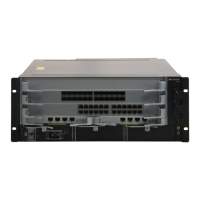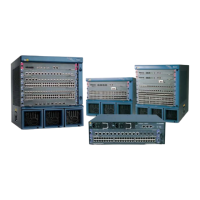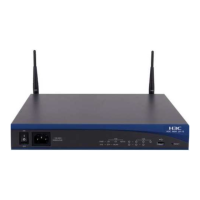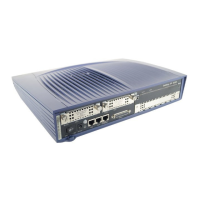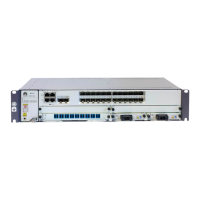Operation Manual - Routing Protocol
Quidway S3500 Series Ethernet Switches Chapter 4 OSPF Configuration
Huawei Technologies Proprietary
4-17
Table 4-18 Configuring OSPF Virtual Link
Operation Command
Create and configure a virtual
link
vlink-peer router-id [ hello seconds | retransmit
seconds | trans-delay seconds | dead seconds |
simple password | md5 keyid key ]*
Remove the created virtual link
undo vlink-peer router-id
area-id and router-id have no default value. By default, hello timer is 10 seconds,
retransmit 5 seconds, trans-delay 1 second, and the dead 40 seconds.
4.2.19 Configuring the OSPF Area to Support Packet Authentication
All the routers in one area must use the same authentication mode (no authentication,
simple text authentication or MD5 cipher text authentication). If the mode of supporting
authentication is configured, all routers on the same segment must use the same
authentication key. To configure a simple text authentication key, use the ospf
authentication-mode simple command. And, use the ospf authentication-mode
md5 command to configure the MD5 cipher text authentication key if the area is
configured to support MD5 cipher text authentication mode.
Perform the following configuration in OSPF Area view.
Table 4-19 Configuring the OSPF Area to Support Packet Authentication
Operation Command
Configure the area to support
authentication type
authentication-mode { simple |
md5 }
Cancel the configured authentication
undo authentication-mode
By default, the area does not support packet authentication.
4.2.20 Configuring OSPF Packet Authentication
OSPF supports simple authentication or MD5 authentication between neighboring
routers.
Perform the following configuration in Interface view:
Table 4-20 Configuring OSPF Packet Authentication
Operation Command
Specify a password for OSPF simple text
authentication
ospf authentication-mode
simple password
Cancel simple authentication on the interface
undo ospf authentication-mode
simple

